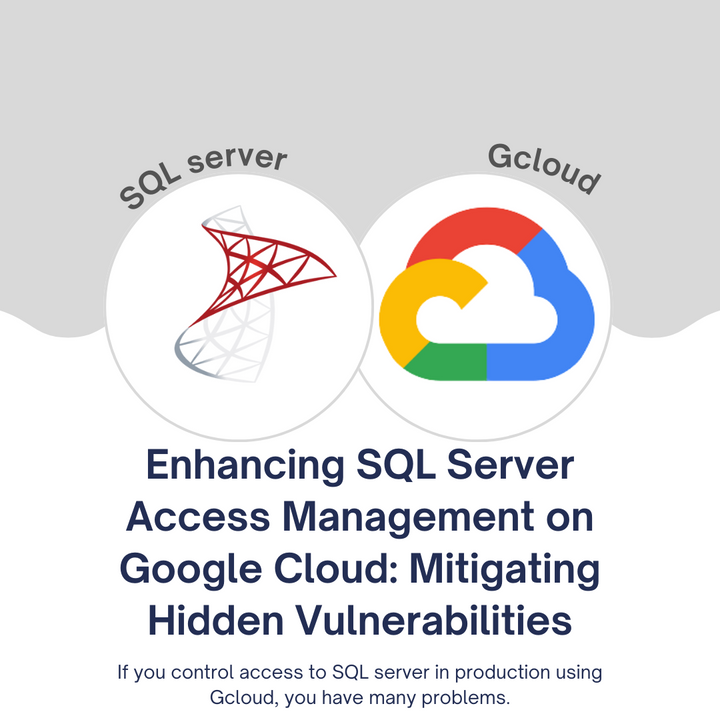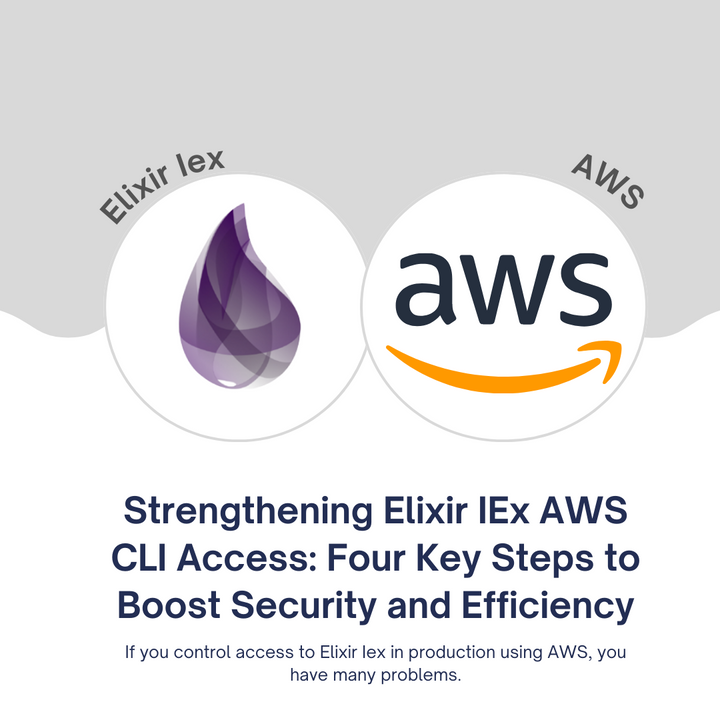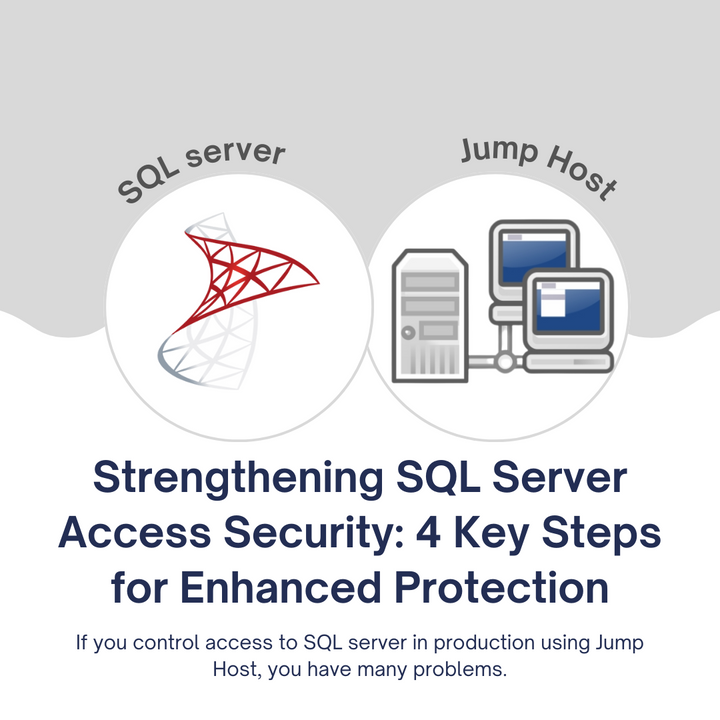Innovations in Database Security: SSO for DBAs
The reason most organizations struggle with database security is because managing user access and authentication across multiple systems can be complex and prone to vulnerabilities.
This happens because most organizations rely on traditional authentication methods, like passwords, which are susceptible to breaches and misuse. The consequence? Data breaches, unauthorized access, and potential regulatory violations.
In this blog post, we're going to walk you through the world of Single Sign-On (SSO) for Database Administrators (DBAs). We'll explore its importance, challenges, integrating Multi-Factor Authentication (MFA), ensuring regulatory compliance, and the potential role of AI and machine learning in the future of database security.
We're going to walk you through:
- The importance of Single Sign-On (SSO) for DBAs
- Challenges and solutions for implementing SSO
- Integrating Multi-Factor Authentication (MFA) with SSO
- Regulatory compliance and SSO
- The future of database security: AI and machine learning in SSO
In a world where data breaches and unauthorized access can wreak havoc, learning about SSO for DBAs can empower you with the tools to enhance security, streamline access control, and ensure compliance. These benefits ultimately lead to better data protection, reduced risk, and peace of mind.
Importance of Single Sign-On (SSO) for Database Administrators (DBAs)
Simplifying the Path to Database Security
Database administrators play a crucial role in managing and safeguarding an organization's data. With the increasing complexity of database systems and the growing number of applications that access them, ensuring robust security measures is paramount.
The conventional approach to authentication, relying solely on passwords, has its limitations. According to Verizon's 2021 Data Breach Investigations Report, 85% of data breaches involve the misuse of credentials. This is where Single Sign-On (SSO) comes into play.
SSO simplifies access control by allowing users, including DBAs, to log in once and gain access to multiple systems without needing to remember and enter different sets of credentials. It streamlines authentication and enhances security.
By implementing SSO, organizations can significantly reduce the risk of password-related breaches and unauthorized access. DBAs can securely access critical systems with a single login, making their tasks more efficient and ensuring that only authorized personnel can perform database management functions.
Mistake to Avoid: Neglecting to implement SSO can lead to a fragmented authentication landscape with multiple access points, increasing the potential for vulnerabilities.
Actionable Tip: Implement SSO solutions for database access to simplify authentication and reduce the risk of unauthorized entry. Test the system thoroughly and engage with experts to optimize configuration.
Real-Life Example: Imagine a DBA at a healthcare organization using SSO to access patient records securely. This reduces the risk of data breaches, ensures compliance with regulations like HIPAA, and simplifies the login process for the DBA.
Takeaway: SSO enhances database security by simplifying access control and reducing the risk of unauthorized access.
Challenges and Solutions for Implementing SSO
Overcoming Hurdles for a Secure System
While SSO offers numerous benefits, its implementation comes with challenges that need to be addressed for a successful integration. Addressing these challenges is essential for achieving a secure and streamlined access control system.
Gartner predicts that by 2023, 95% of cloud security failures will be the customer's fault, often due to misconfiguration. Misconfigurations can lead to security vulnerabilities that could expose sensitive data.
To ensure successful implementation, it's crucial to conduct thorough testing and engage with experts who can help you optimize the SSO configuration. This step is necessary to overcome any initial hurdles and ensure that your system is not only secure but also user-friendly.
Mistake to Avoid: Failing to properly configure and secure the SSO system can expose sensitive data and leave your organization vulnerable to attacks.
Actionable Tip: Plan and test the implementation of SSO meticulously. Engage with experts who can provide guidance and expertise in configuration.
Real-Life Example: A financial institution successfully implements SSO, overcoming initial hurdles related to configuration and usability. As a result, their employees benefit from a more secure and efficient login experience.
Takeaway: Challenges in SSO implementation can be surmounted with careful planning and expertise.
Integrating Multi-Factor Authentication (MFA) with SSO
Fortifying Database Security
To further fortify database security, consider combining Single Sign-On with Multi-Factor Authentication (MFA). MFA adds an extra layer of security to the SSO process.
Microsoft states that MFA can block 99.9% of account compromise attacks, making it a formidable ally in the battle against unauthorized access. Even if login credentials are compromised, MFA provides an additional layer of protection, making it significantly more challenging for malicious actors to gain access.
Relying solely on SSO without MFA can leave your system vulnerable to sophisticated attacks that could exploit weaknesses in the authentication process.
Actionable Tip: Implement MFA as a complementary layer to SSO for DBAs and other users, providing robust security that reduces the risk of unauthorized access.
Real-Life Example: An e-commerce company combines SSO with MFA, ensuring that customer payment data is safe and customers trust their platform. This not only protects the company's reputation but also ensures the security of sensitive financial information.
Takeaway: MFA is a valuable addition to SSO, significantly increasing security for database access.
Regulatory Compliance and SSO
Meeting Regulatory Demands
Meeting regulatory requirements is critical in many industries. Regulations often demand strict access control and authentication measures to protect sensitive data and maintain customer trust. This is where SSO can be an invaluable tool.
In a survey by PwC, 43% of CEOs stated that regulations were the primary driver of investments in cybersecurity. Non-compliance can result in fines and legal repercussions, making adherence to regulations a top priority.
Actionable Tip: Ensure your SSO system meets the specific regulatory standards of your industry. Keep a close eye on regulatory updates to stay compliant.
Real-Life Example: An energy company adopts SSO to meet NERC CIP requirements, safeguarding critical infrastructure and ensuring they comply with industry-specific regulations. This not only protects their assets but also helps them avoid regulatory penalties.
Takeaway: SSO simplifies compliance efforts, reducing the regulatory burden on DBAs and ensuring adherence to industry-specific regulations.
The Future of Database Security: AI and Machine Learning in SSO
Advancements on the Horizon
As technology continues to evolve, the future of SSO in database security may involve the integration of artificial intelligence (AI) and machine learning. AI can enhance threat detection, adapt to evolving threats, and provide a more robust security framework.
Gartner predicts that by 2024, 25% of organizations will use AI for at least one authentication or identity proofing use case. AI-driven SSO can identify and block unusual access attempts, ultimately enhancing security in an increasingly complex digital landscape.
Actionable Tip: Stay informed about AI and machine learning advancements in database security. Consider how these technologies can augment your SSO system in the future.
Real-Life Example: A technology company leverages AI-powered SSO to identify and block unusual access attempts, protecting sensitive customer data. This advanced security system adapts to new threats and ensures the integrity of their databases.
Takeaway: Embracing AI and machine learning can make SSO even more effective in the future, providing adaptive and proactive security measures.
In conclusion, Single Sign-On (SSO) for Database Administrators (DBAs) is a critical component of modern database security. It streamlines access control, enhances security, and simplifies compliance efforts. By understanding the importance of SSO, addressing implementation challenges, integrating Multi-Factor Authentication, and considering the role of AI, organizations can bolster their database security, reduce the risk of breaches, and protect sensitive data in an ever-changing digital landscape.



